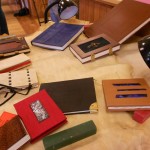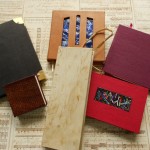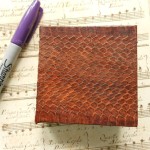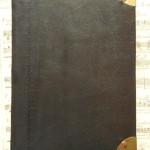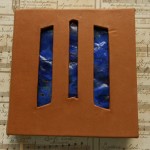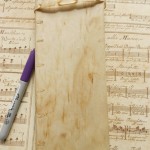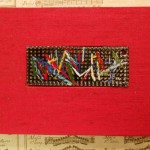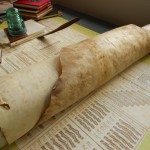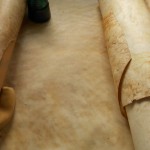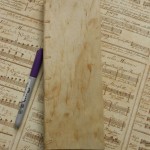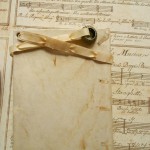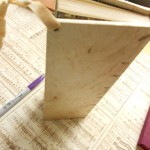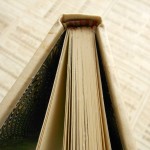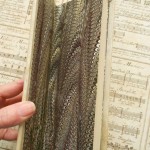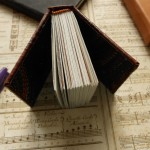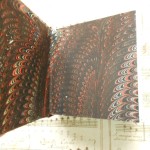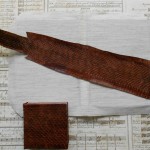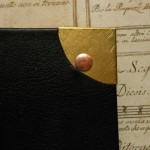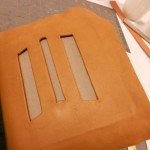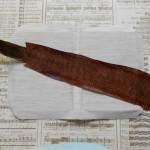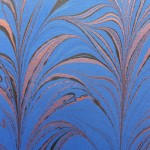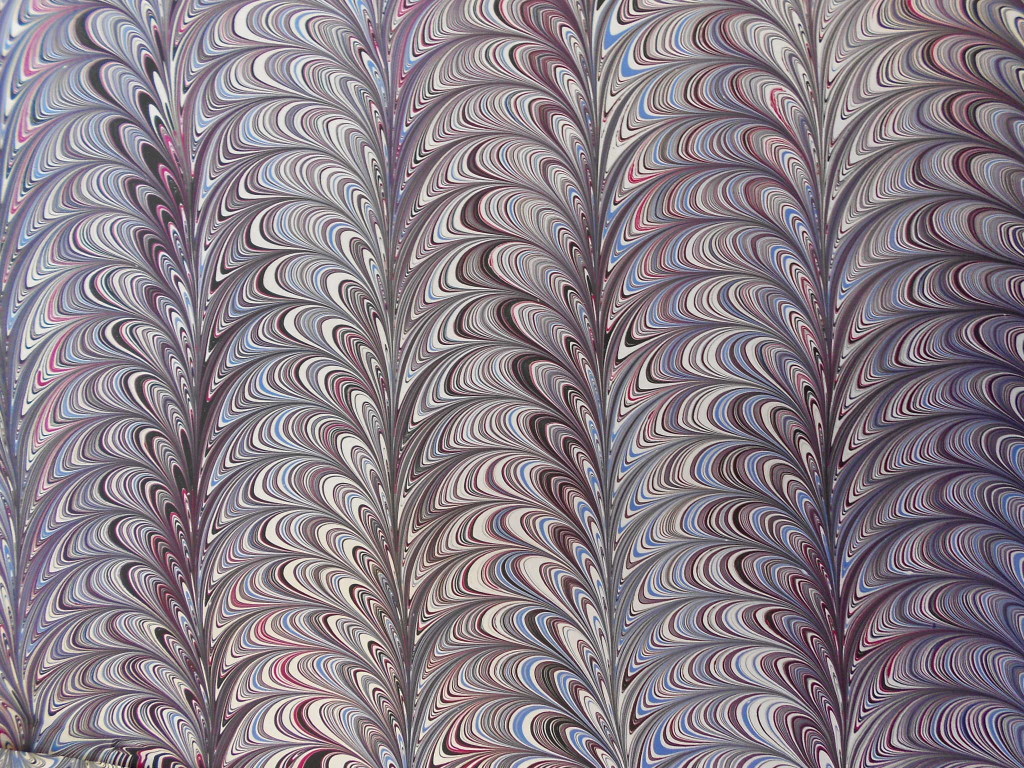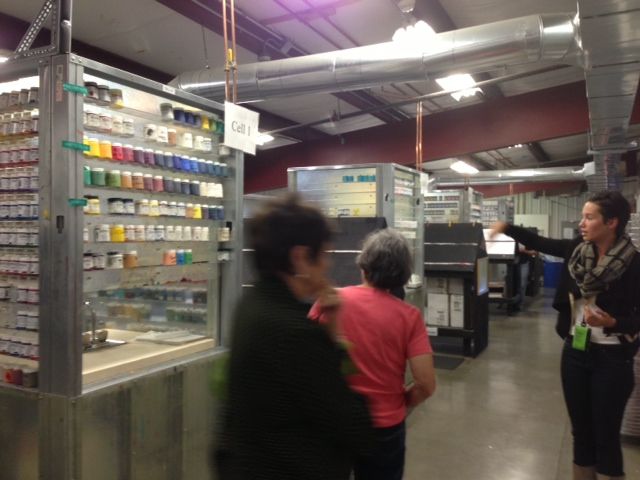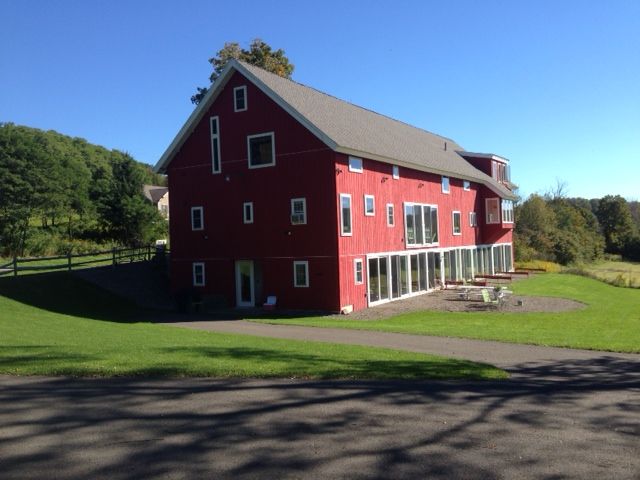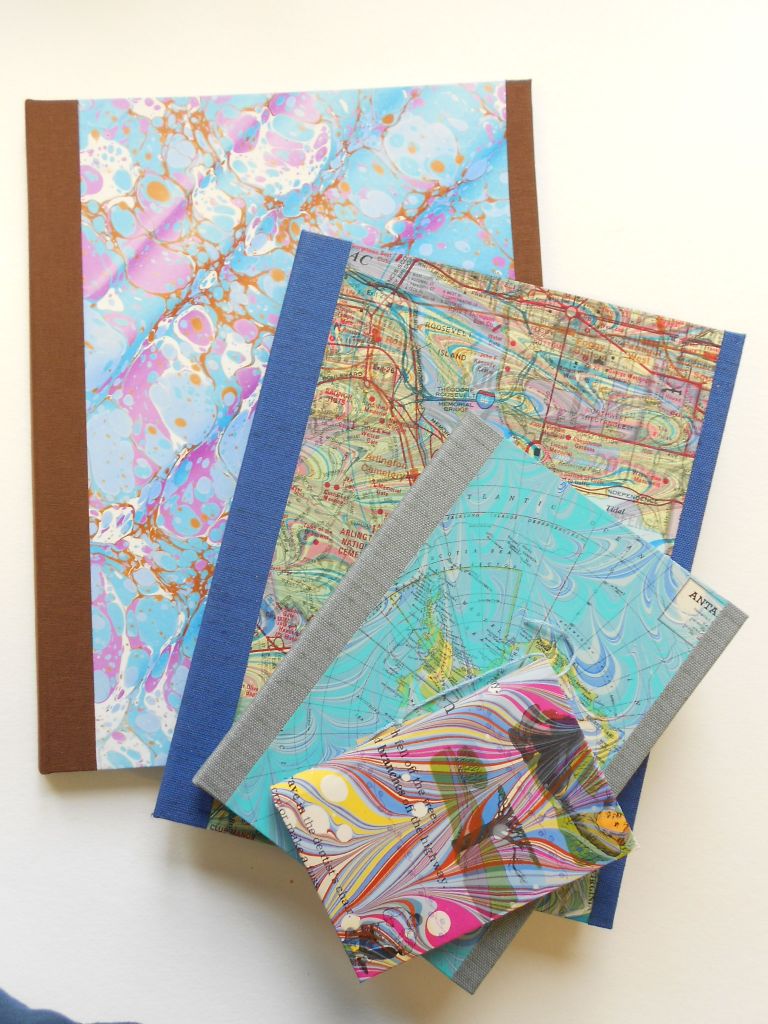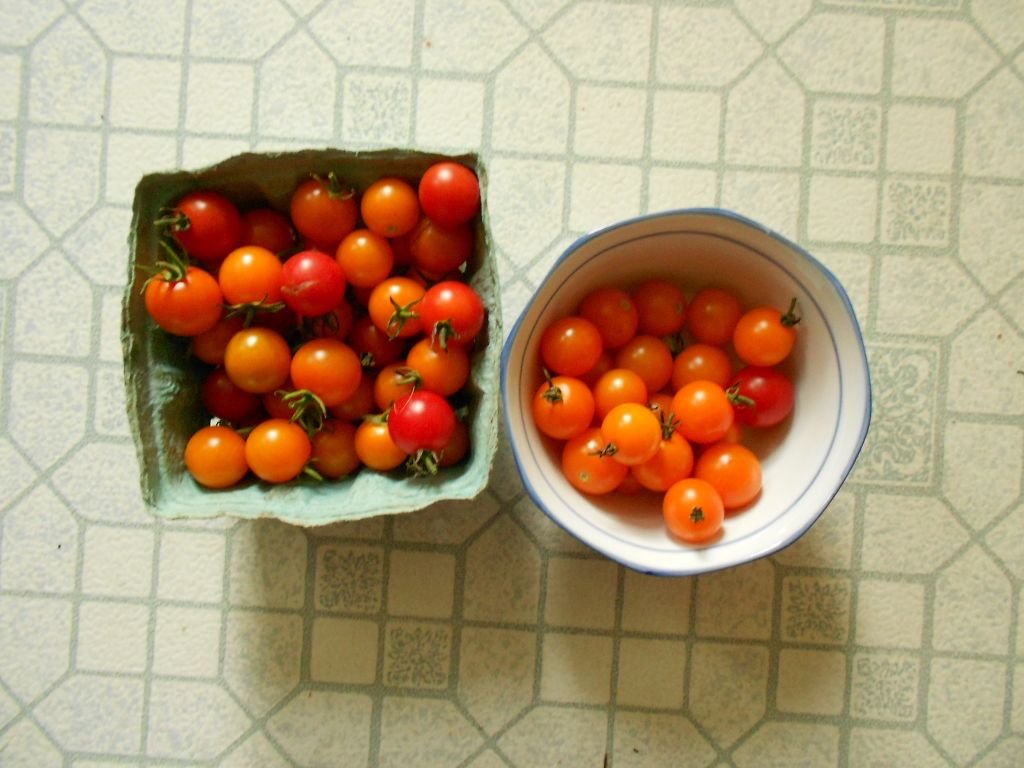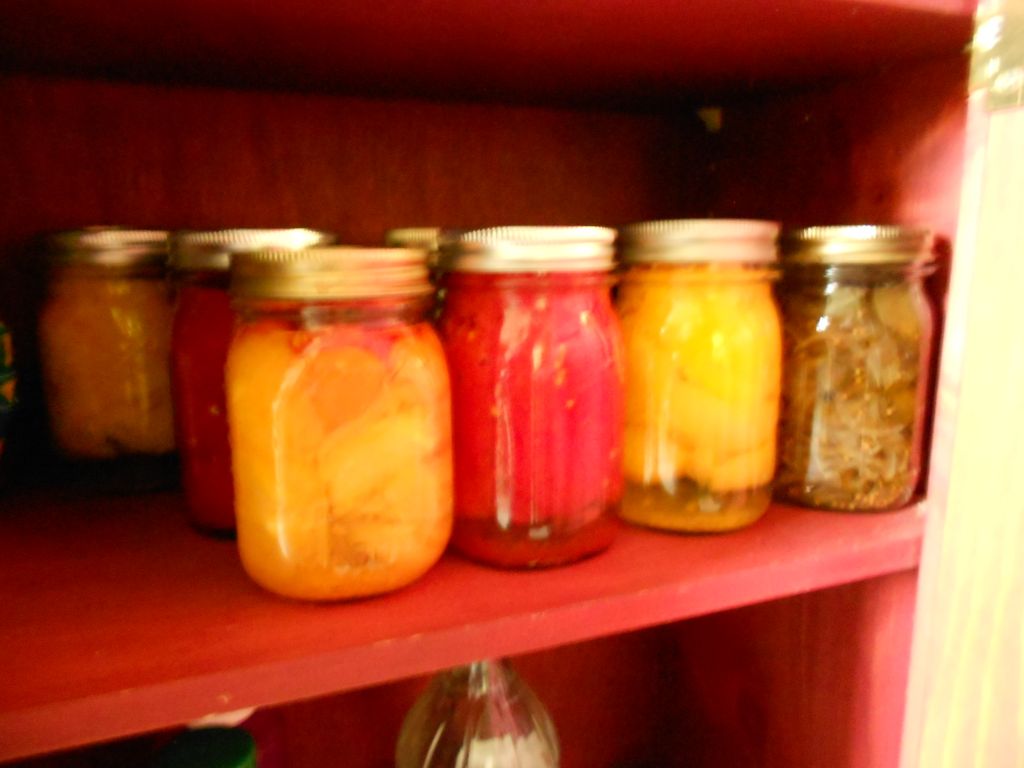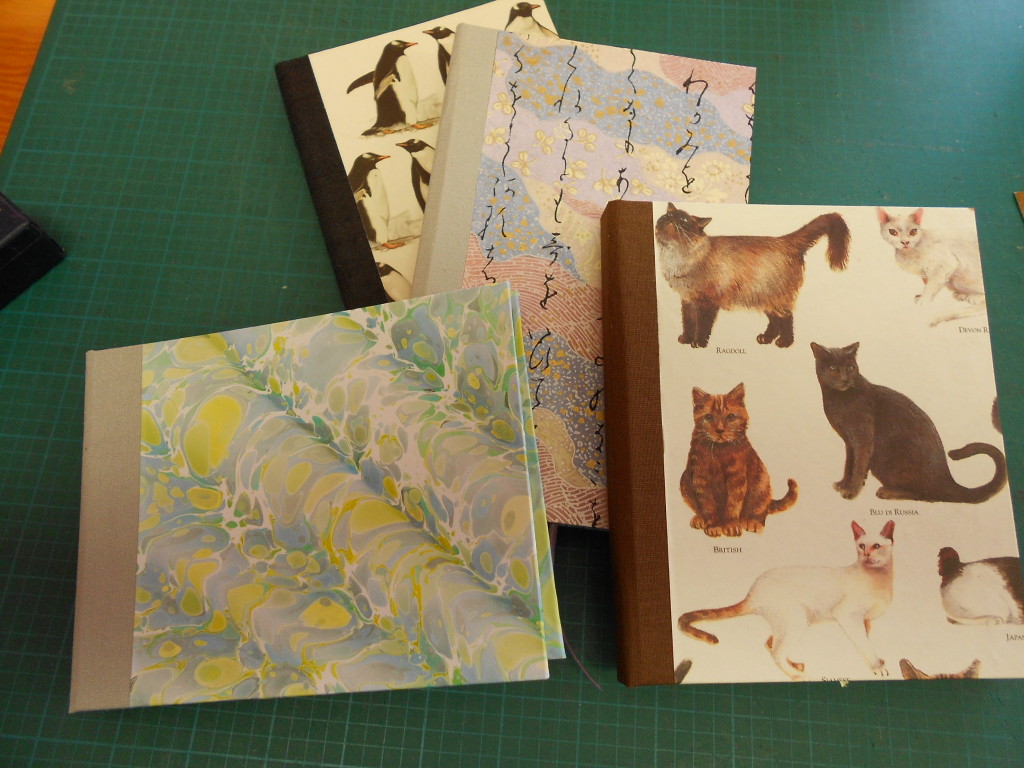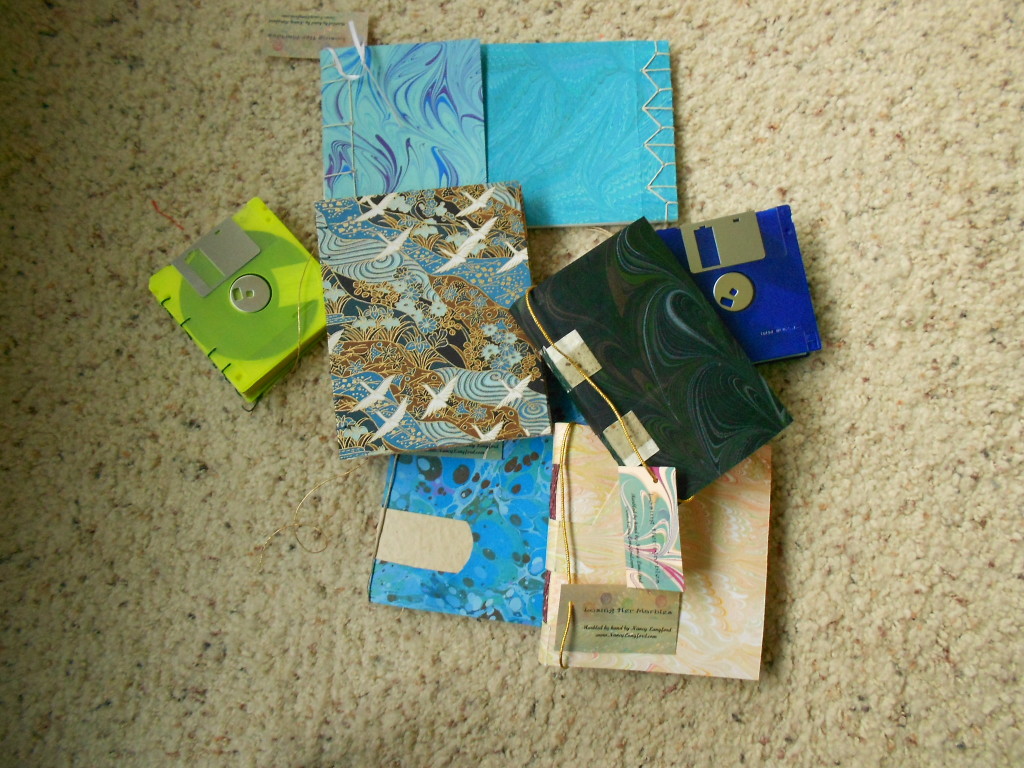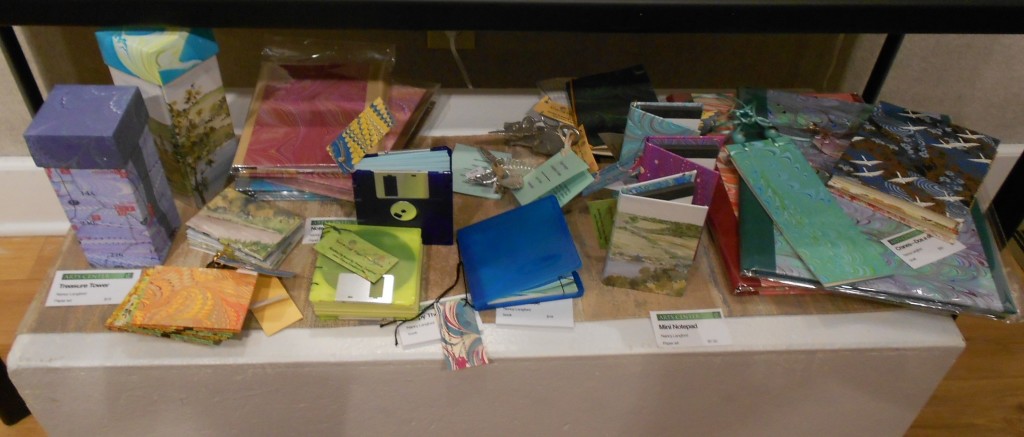It has taken me a long time to get around to this blog about my last week at the Campbell Folk School. I’m not sure why – the press of catching up, my tiredness from the week or just the difficulty of encapsulating seven very busy and eventful days.
I think I’ll start backwards and show the books I finished during the week first and go into detail later.
- Class Display at JCC
- My books
- Snakeskin
- Leather bound with brass corners
- Finished leather with enameled inset
- 12th Century style bound in Rawhide
- Cloth with enameled inset
As you can see from the outside of these books, I was playing with lots of different ideas. What you can’t see, is that the internal structures on these are quite different. Unfortunately, I couldn’t find my camera for the first few days, so I have no pictures of some of the books in progress. I’m hoping some of my classmates will share a few of their pictures. There were only four students in the class and we were all working on very different projects, but there were some commonalities.
The first book I made was the 12th century account book. I love the shape and size of the book. It’s only 3 1/2″ wide by 10″ tall. This type of book was used for accounts and also for reading aloud. Since most of the population was illiterate, recitation and reading aloud were very important social and cultural activities. I can imagine Chaucer holding a book like this and reading his poetry in the English Court.
The instructor, Gian Frontini, had made a book like this from vellum. I had found some old rolls of rawhide in my basement and had brought them with me on the chance I could find something to do with them. The match was perfect! My rawhide had been cured and scraped rather crudely which left some interesting texture and markings on the book. I used a slightly rough Fabriano paper for the textblock. It was sewn over narrow strips of the cover rawhide which were later laced into the boards. You can see the lacing in the photos. I made the headbands with embroidery floss, sewing them into the textblock. The book was then finished off anachronistically with some of my marbled paper. Even though it is not correct for the period of the binding, I felt it was a wonderful match for the organic feel of the book. Traditionally, all the edges of the book would have been painted, usually red, but I decided not to. A laced thong of rawhide was added to the back board of the book. The thong helps to keep the book closed and was also used as a “leash” for the book. I added a small silver bauble to help in grabbing the book.
- Original rolls of rawhide
- Rawhide showing some of the patterning
- 12th Century style bound in Rawhide
- Lacing along left side has been sewn into textblock
- Rawhide laced thong is used for closure
- Laced thong attached to back boadr
- Hand-sewn headband
- Marbled paper endpapers
I had also found in my basement ( yes, it is a bit like Aladdin’s cave) a long, narrow roll of snakeskin. I threw it into my box at the last minute intending to ask Gian if I could use it for something in binding. The answer was yes and I decided to make a very small book. The snakeskin at it’s broadest was less than 4″ wide, so I settled on a book that’s only 3 inches square. Because it’s so small, I made it thick. Lots of pages with few words on each! Like the rawhide, the snakeskin had to have Japanese paper pasted to the reverse side to give flexibility and durability to the piece. I sewed this textblock with a running Coptic stitch that was used in many Gothic books. This stitch is not as stable as sewing over tapes, but it is more appropriate to the materials. I cheated here on the headbands and use the paste on variety, mainly because I was afraid of running out of time. The spine was not glued down, but left as an open tube. Again, I used my marbled paper as endpapers – a very snaky match. I was amazed that I had brought just the right papers with me. I only brought four or five sheets with no plan of how I would use them. To find I had two that were such great matches was miraculous. If you have read any of my blogs, you know how I agonize over finding just the right papers.
- Snakeskin
- Finished snakeskin book
- Endpapers
- Some of the rest of the snake on an unfinished book
Next blog I’ll talk about my metal corners, enameled insets and unfinished business.
- Corner, showing texture & rivet
- Front cover before addition of bottom board and enamel

